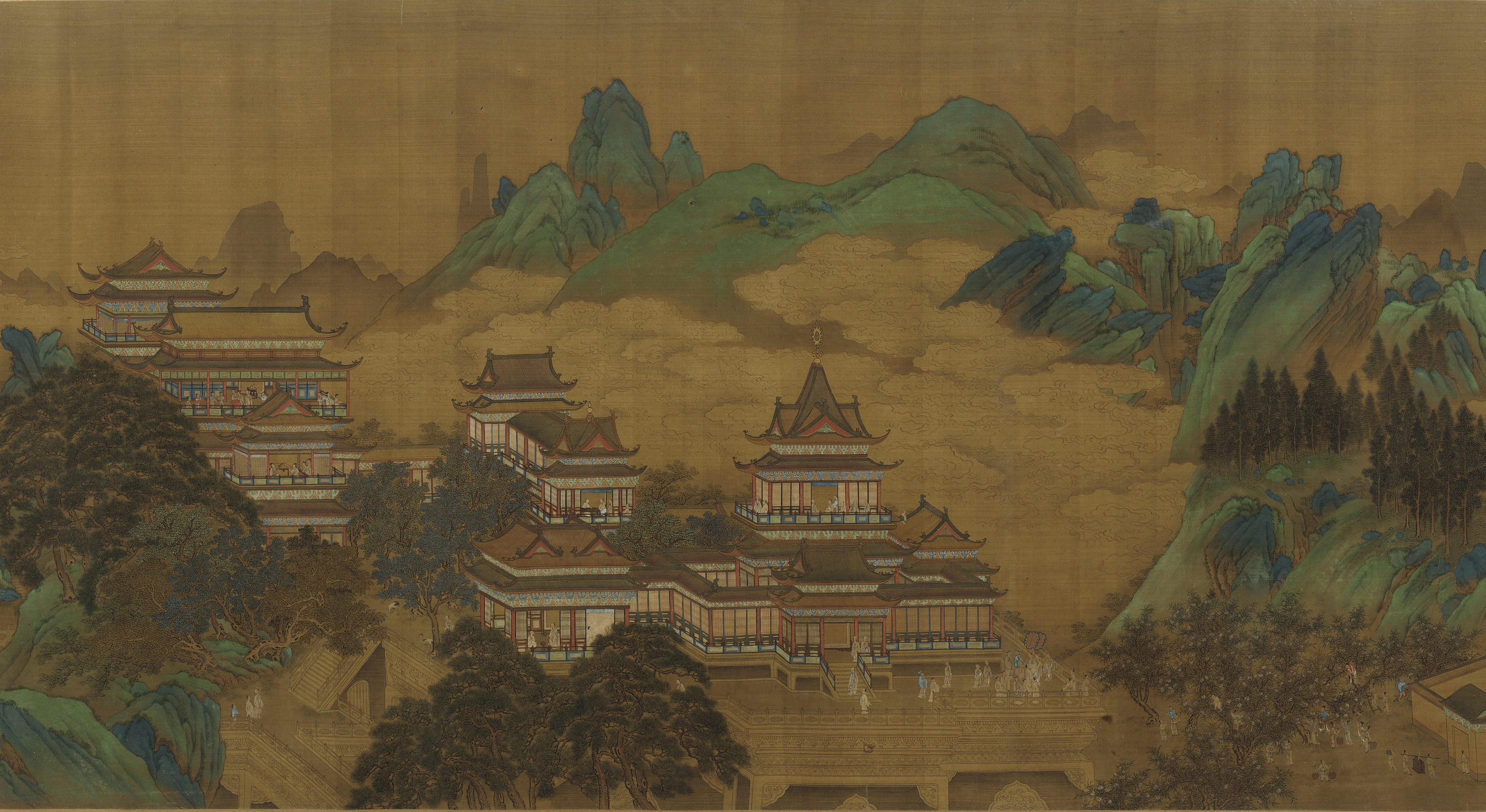Paraline Geometry
The idea of sloping lines is given a geometric rationality in Japanese and Chinese art. Rectangular linear forms are rendered with parallel sides. They appear as parallelograms, and though they look oddly distorted, it is actually possible to accurately measure all sides of these shapes.
Toyota Hokkei: Kakizome, 1824
https://www.wikiart.org/en/toyota-hokkei/woman-preparing-for-the-first-calligraphy-of-the-year-kakizome-1824
Utagawa Yoshitora: From the series The 47 Faithful Samurai, ca. 1852
https://www.roningallery.com/artists/Yoshitora
Formerly attributed to Fang Chunnian (ca.1225-1264): Peach Festival of the Queen Mother of the West ca.1800?
https://asia.si.edu/object/F1908.170/
Drafters and Architects have adopted this system to render several different modes of Paraline drawings. Oblique Drawings have the front side rendered to scale with accurate dimensions and angles. Axonometric Drawings are rendered with accurate dimensions, but with all angles distorted. The most common view is the Isometric mode, in which all angles are equal. This construction is very descriptive and is most often used for rendering an exploded view.
Oblique Modes
Axonometric Modes
https://mechanicalland.com
Vox Guitar, Viper 289: exploded Isometric view.
http://www.voxshowroom.com/us/guitar/viper1.html





